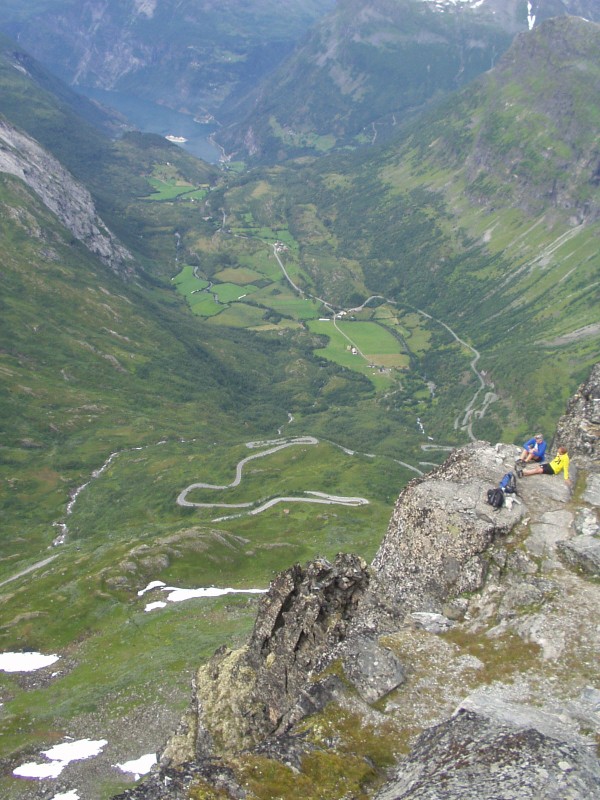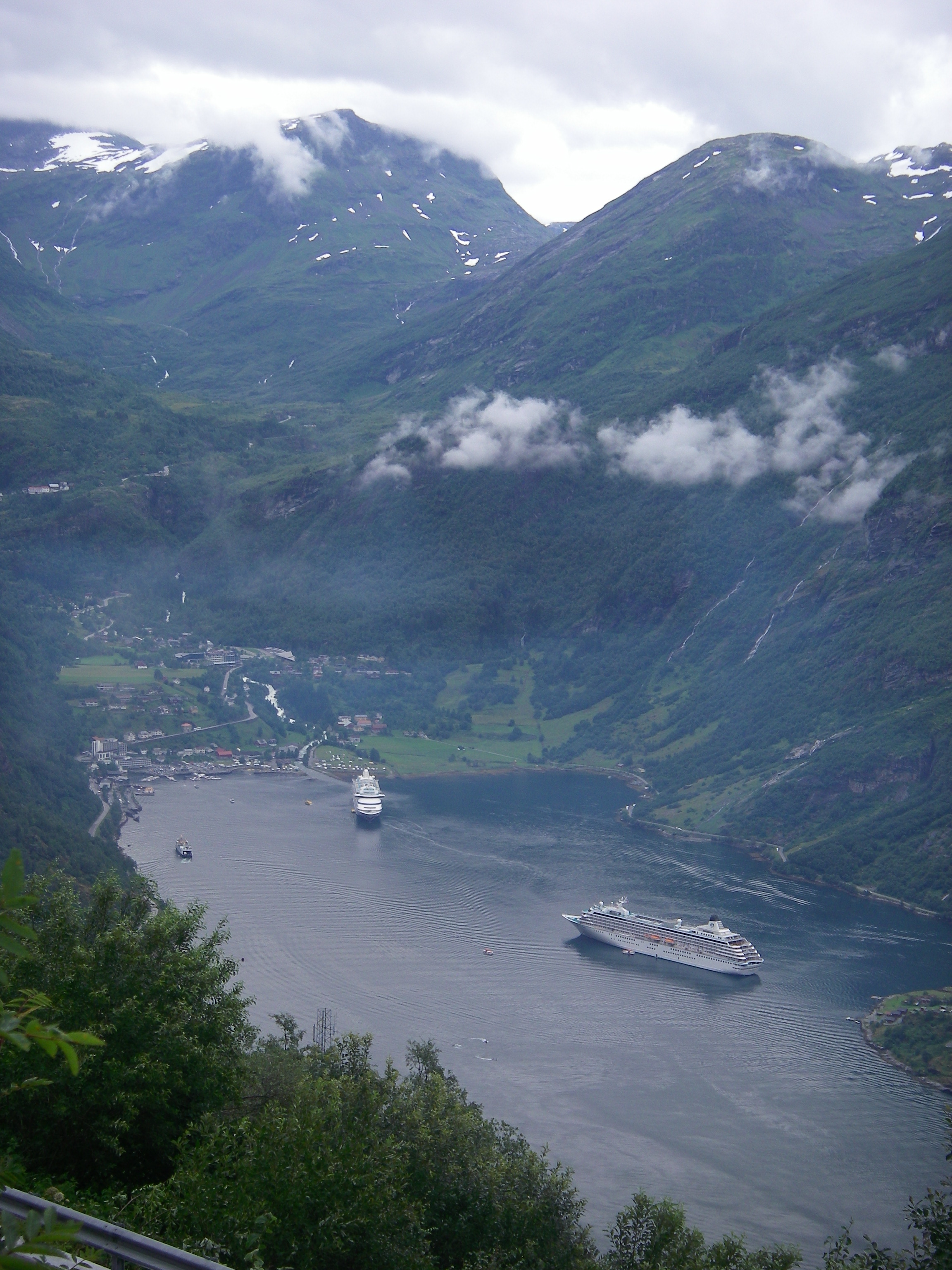|
Skageflå
Skageflå is one of a handful of historic mountain farms on the steep mountainsides along the Geirangerfjorden. It is located in Stranda Municipality in Møre og Romsdal county, Norway. Skageflå lies approximately above the fjord. The farm is a 2 to 4 hour walk from the nearby village of Geiranger, and can also be reached with help of a local sightseeing boat (M/S ''Geirangerfjord''). The boat takes passengers to a spot on the fjord just below the farm, from where they face a very steep half-hour climb. ''Coastal Odyssey'', a sea kayaking company, runs guided kayaking tours with interpretation to the farm. ''Active Geiranger'' also does guided kayak trips to the farm as well as water taxi trips to the trail. Directly across the fjord is the old Knivsflå farm and the Seven Sisters waterfall. Although it was abandoned in 1916, Skageflå was once one of the richer goat farms in Geiranger, and had two or three mountain pastures for its animals. The farm was inhabited from ... [...More Info...] [...Related Items...] OR: [Wikipedia] [Google] [Baidu] |
Geiranger
Geiranger is a small tourist village in Sunnmøre region of Møre og Romsdal county in the western part of Norway. It is in the municipality of Stranda at the head of the Geirangerfjorden, which is a branch of the large Storfjorden. The nearest city is Ålesund. Geiranger is home to spectacular scenery, and has been named the best travel destination in Scandinavia by Lonely Planet. Since 2005, the Geirangerfjord area has been listed as a UNESCO World Heritage Site. The Seven Sisters waterfall is located just west of Geiranger, directly across another waterfall called "The Suitor." Norwegian County Road 63 passes through the village. Geiranger Church is the main church for the village and surrounding area. Geiranger is under constant threat from landslides from the mountain Åkerneset into the fjord. A collapse would cause a tsunami that could destroy downtown Geiranger. For this reason, sirens have been installed to warn residents if a landslide should occur. Name The Old ... [...More Info...] [...Related Items...] OR: [Wikipedia] [Google] [Baidu] |
Geirangerfjorden
The Geiranger Fjord ( no, Geirangerfjorden) is a fjord in the Sunnmøre region of Møre og Romsdal county, Norway. It is located entirely in the Stranda Municipality. It is a branch off the Sunnylvsfjorden, which is a branch off the Storfjorden (Great Fjord). The small village of Geiranger is located at the end of the fjord where the Geirangelva river empties into it. The fjord The fjord is one of Norway's most visited tourist sites. In 2005, it was listed as a UNESCO World Heritage Site, jointly with the Nærøyfjorden. This status was challenged by the disputed plans to build power lines across the fjord. A car ferry, which doubles as a sightseeing trip, is operated by Fjord1 Nordvestlandske. It runs lengthwise along the fjord between the small towns of Geiranger and Hellesylt. The fjord is scheduled to require zero-emissions ships in 2026. Along the fjord's sides there lie a number of now-abandoned farms. Some restoration has been made by the ''Storfjordens venner ... [...More Info...] [...Related Items...] OR: [Wikipedia] [Google] [Baidu] |
Seven Sisters Waterfall, Norway
The Seven Sisters ( no, De Syv Søstrene or , also known as ) is the 39th tallest waterfall in Norway. The tall waterfall consists of seven separate streams, and the tallest of the seven has a free fall that measures . The waterfall is located along the Geirangerfjorden in Stranda Municipality in Møre og Romsdal county, Norway. The waterfall is located just south of the historic Knivsflå farm, across the fjord from the old Skageflå farm. The falls are about west of the village of Geiranger. It is part of the Geiranger World Heritage Site A World Heritage Site is a landmark or area with legal protection by an international convention administered by the United Nations Educational, Scientific and Cultural Organization (UNESCO). World Heritage Sites are designated by UNESCO for h .... Name "The Seven Sisters" ( no, De Syv Søstrene or nn, Dei Sju Systrene) is located on the northern side of Geirangerfjorden, and directly across the fjord lies a single waterfall call ... [...More Info...] [...Related Items...] OR: [Wikipedia] [Google] [Baidu] |
Stranda Municipality
Stranda is a municipality in Møre og Romsdal county, Norway. It is part of the Sunnmøre region. The administrative centre of the municipality is the village of Stranda. Stranda consists of three smaller villages and one larger central village. The smaller villages are Hellesylt, Geiranger, and Liabygda. The central village, Stranda (same name as the municipality), has about 2,600 inhabitants. Stranda Municipality is known for tourist attractions like the Geirangerfjorden Sunnylvsfjorden and its skiarea at Strandafjellet The municipality is the 134th largest by area out of the 356 municipalities in Norway. Stranda is the 192nd most populous municipality in Norway with a population of 4,467. The municipality's population density is and its population has decreased by 2.9% over the previous 10-year period. General information The parish of ''Stranden'' was established as a municipality on 1 January 1838 (see formannskapsdistrikt law). On 1 January 1892, the northern district ... [...More Info...] [...Related Items...] OR: [Wikipedia] [Google] [Baidu] |
Stranda
Stranda is a municipality in Møre og Romsdal county, Norway. It is part of the Sunnmøre region. The administrative centre of the municipality is the village of Stranda. Stranda consists of three smaller villages and one larger central village. The smaller villages are Hellesylt, Geiranger, and Liabygda. The central village, Stranda (same name as the municipality), has about 2,600 inhabitants. Stranda Municipality is known for tourist attractions like the Geirangerfjorden Sunnylvsfjorden and its skiarea at Strandafjellet The municipality is the 134th largest by area out of the 356 municipalities in Norway. Stranda is the 192nd most populous municipality in Norway with a population of 4,467. The municipality's population density is and its population has decreased by 2.9% over the previous 10-year period. General information The parish of ''Stranden'' was established as a municipality on 1 January 1838 (see formannskapsdistrikt law). On 1 January 1892, the northern distr ... [...More Info...] [...Related Items...] OR: [Wikipedia] [Google] [Baidu] |
Knivsflå
Knivsflå is one of a handful of historic mountain farms on the steep mountainsides along the Geirangerfjorden. It is located in Stranda Municipality, Møre og Romsdal county, Norway. Actually it was two farms sharing the location, and they have been inhabited since at least the 1600s. There is also a mountain pasture situated some above the fjord. It is reachable by a hardly visible footpath, starting from Knivsflå. The Knivsflå farm was abandoned in 1898 due to the danger of falling rocks. The farm is located to the north of the Seven Sisters waterfall, and directly across the fjord from the old Skageflå farm. Knivsflå lies approximately above the fjord In physical geography, a fjord or fiord () is a long, narrow inlet with steep sides or cliffs, created by a glacier. Fjords exist on the coasts of Alaska, Antarctica, British Columbia, Chile, Denmark, Förden and East Jutland Fjorde, Germany, .... One can reach Knivsflå from the nearby village of Geirange ... [...More Info...] [...Related Items...] OR: [Wikipedia] [Google] [Baidu] |
Middle Ages
In the history of Europe, the Middle Ages or medieval period lasted approximately from the late 5th to the late 15th centuries, similar to the post-classical period of global history. It began with the fall of the Western Roman Empire and transitioned into the Renaissance and the Age of Discovery. The Middle Ages is the middle period of the three traditional divisions of Western history: classical antiquity, the medieval period, and the modern period. The medieval period is itself subdivided into the Early, High, and Late Middle Ages. Population decline, counterurbanisation, the collapse of centralized authority, invasions, and mass migrations of tribes, which had begun in late antiquity, continued into the Early Middle Ages. The large-scale movements of the Migration Period, including various Germanic peoples, formed new kingdoms in what remained of the Western Roman Empire. In the 7th century, North Africa and the Middle East—most recently part of the Eastern Ro ... [...More Info...] [...Related Items...] OR: [Wikipedia] [Google] [Baidu] |



